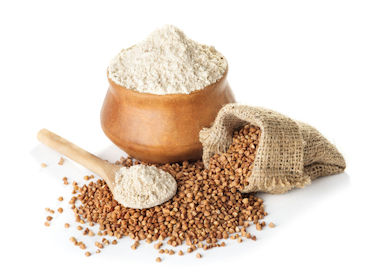|
Improved blood sugar control
Over time, high levels of blood sugar may lead to various chronic diseases like type 2 diabetes.
Thus, moderating the rise in blood sugar after meals is important for maintaining good health.
As a good source of fibre, buckwheat has a low to medium GI. This means that it should be safe to eat for most people with type 2 diabetes.
In fact, studies link buckwheat intake to lower blood sugar in people with.
This is supported by a study of rats with diabetes, in which buckwheat concentrate was shown to lower blood sugar levels by 12–19% .
This effect is thought to be due to the unique compound D-chiro-inositol. Studies indicate that this soluble carb makes cells more sensitive to insulin, the hormone that causes cells to absorb sugar from your blood.
In addition, some components of buckwheat seem to prevent or delay the digestion of table sugar
Overall, these properties make buckwheat a healthy choice for people with type 2 diabetes or those who want to improve their blood sugar balance.
Heart health
Buckwheat may also promote heart health.
It boasts many heart-healthy compounds, such as rutin, magnesium, copper, fibre, and certain proteins.
Among cereals and pseudocereals, buckwheat is the richest source of rutin, an antioxidant that may have a number of benefits.
Rutin may cut your risk of heart disease by preventing the formation of blood clots and decreasing inflammation and blood pressure.
Buckwheat has also been found to improve your blood lipid profile. A poor profile is a well-known risk factor for heart disease.
A study in 850 Chinese adults linked buckwheat intake to lower blood pressure and an improved blood lipid profile, including lower levels of LDL (bad) cholesterol and higher levels of HDL (good) cholesterol.
This effect is believed to be caused by a type of protein that binds cholesterol in your digestive system, preventing its absorption into your bloodstream.
Potential downsides
Apart from causing allergic reactions in some people, buckwheat does not have any known adverse effects when eaten in moderation.
Buckwheat allergy
A buckwheat allergy is more likely to develop in those who consume buckwheat often and in large amounts.
A phenomenon known as allergic cross-reactivity makes this allergy more common in those already allergic to latex or rice.
Symptoms may include skin rashes, swelling, digestive distress, and — in worst-case scenarios — severe allergic shock.
|

